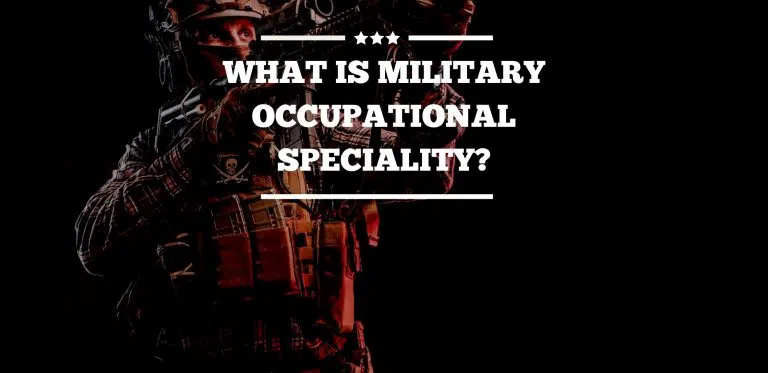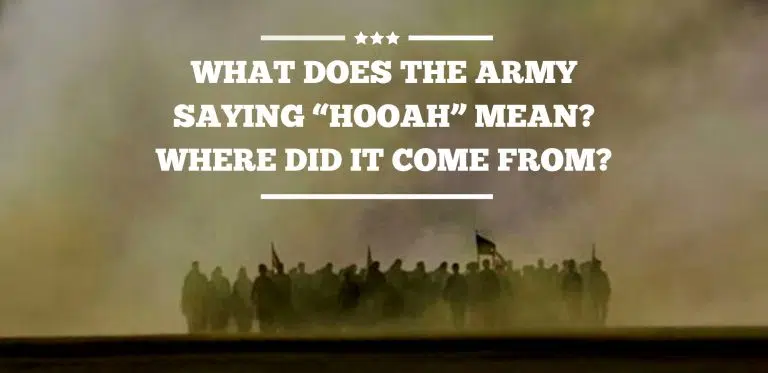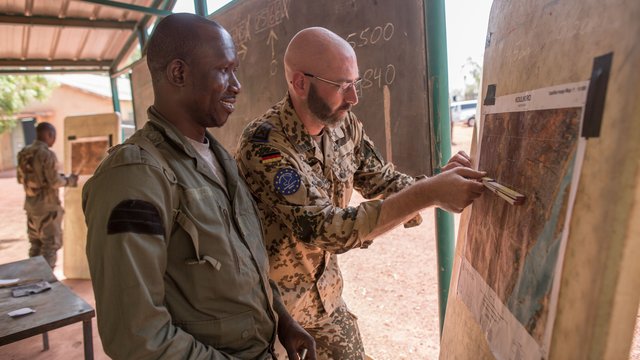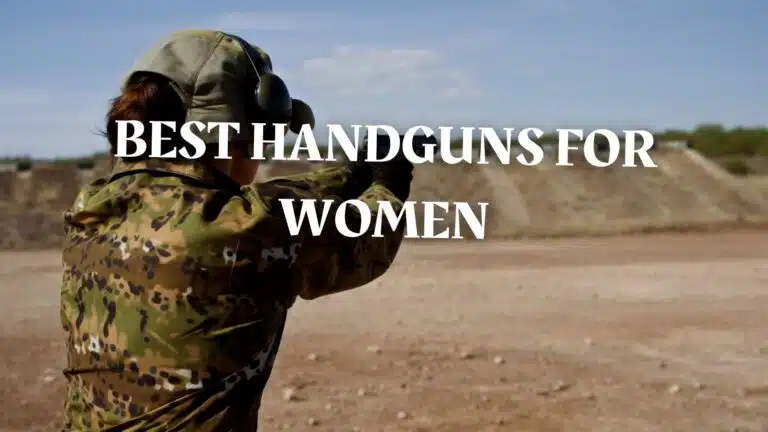What Are Army Height / Weight Standards For Men & Women?
Important Note: When you buy through our links, we may earn a commission. As an Amazon Associate we earn from qualifying purchases. Content, pricing, offers and availability are subject to change at any time - more info.
The army height and weight standards for men and women differ by a few inches and a few pounds of weight. The army uses this size to determine an individual’s suitability for military service. Weight should be proportional to your height and gender. Your body weight is measured in kilograms. Your height is measured in centimeters, and your age is estimated by the number of years you have lived.
Background
The army height and weight standards are tied to the physical fitness test. The army height and weight standards do not apply to all military personnel. Army Height and weight standards have been determined by various factors, including; ease of movement, numbers in a fire team, combat viability, and optimal performance. Women may have to take the basic training physical fitness test at least once during their military service. The army has a body fat percentage for men and women.
Height Standards for Men and Women
Men: 57 inches/64 inches tall, depending on the branch of service. Men over 6 feet 2 inches are not eligible for specific military components. Women: 62 inches/66 inches tall, depending on the branch of service. Women over 5 feet 11 inches are not eligible for specific military members.
Men weigh up to 72 pounds, and women weigh 108 pounds when joining the military. However, both men and women cannot exceed this weight limit regularly.
How standards are measured
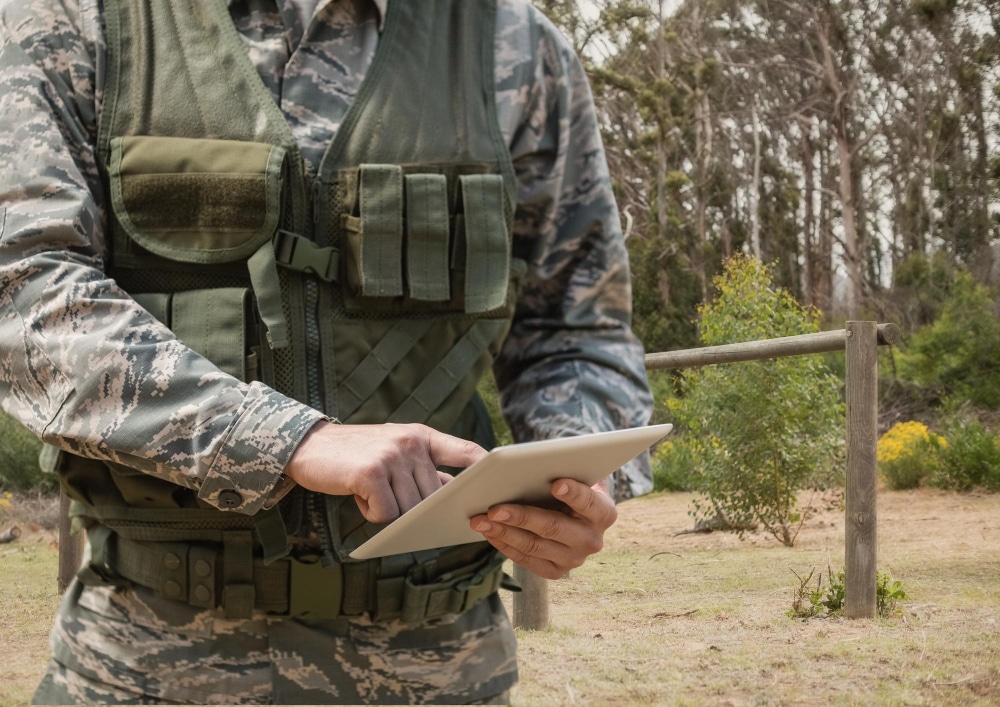
The health department determines the height and weight standards. They use a pretty complex formula to determine the size and weight acceptable for a person. For a person to reach the criteria, they must meet specific requirements.
To become an army officer, a man must be 21 years old and weigh 147 pounds.
To become an army officer, a woman must be 18 years old and weigh 118 pounds.
A medical examination determines the body fat percentage.
Body Fat Requirements for Males
| Age 17-20 | 20% Body Fat |
| Age 21-27 | 22% Body Fat |
| Age 28-39 | 24% Body Fat |
| Age 40+ | 26% Body Fat |
Body Fat Requirements for Females
| Age 17-20 | 30% Body Fat |
| Age 21-27 | 32% Body Fat |
| Age 28-39 | 34% Body Fat |
| Age 40+ | 36% Body Fat |
The army does have unique restrictions for soldiers. If you are over 6 foot 2 inches, you are not allowed to join certain army branches.
Table of requirements by age and sex
Male Army Height & Weight Requirements
| Height | Weight | Ages 17-20 | Ages 21-27 | Ages 28-39 | Ages 40+ |
| 58″ | 91 lbs. | N/A | N/A | N/A | N/A |
| 59″ | 94 lbs. | N/A | N/A | N/A | N/A |
| 60″ | 97 lbs. | 132 lbs. | 136 lbs. | 139 lbs. | 141 lbs. |
| 61″ | 100 lbs. | 136 lbs. | 140 lbs. | 144 lbs. | 146 lbs. |
| 62″ | 104 lbs. | 141 lbs. | 144 lbs. | 148 lbs. | 150 lbs. |
| 63″ | 107 lbs. | 145 lbs. | 149 lbs. | 153 lbs. | 155 lbs. |
| 64″ | 110 lbs. | 150 lbs. | 154 lbs. | 158 lbs. | 160 lbs. |
| 65″ | 114 lbs. | 155 lbs. | 159 lbs. | 163 lbs. | 165 lbs. |
| 66″ | 117 lbs. | 160 lbs. | 163 lbs. | 168 lbs. | 170 lbs. |
| 67″ | 121 lbs. | 165 lbs. | 169 lbs. | 174 lbs. | 176 lbs. |
| 68″ | 125 lbs. | 170 lbs. | 174 lbs. | 179 lbs. | 181 lbs. |
| 69″ | 128 lbs. | 175 lbs. | 179 lbs. | 184 lbs. | 186 lbs. |
| 70″ | 132 lbs. | 180 lbs. | 185 lbs. | 189 lbs. | 192 lbs. |
| 71″ | 136 lbs. | 185 lbs. | 189 lbs. | 194 lbs. | 197 lbs. |
| 72″ | 140 lbs. | 190 lbs. | 195 lbs. | 200 lbs. | 203 lbs. |
| 73″ | 144 lbs. | 195 lbs. | 200 lbs. | 205 lbs. | 208 lbs. |
| 74″ | 148 lbs. | 201 lbs. | 206 lbs. | 211 lbs. | 214 lbs. |
| 75″ | 152 lbs. | 206 lbs. | 212 lbs. | 217 lbs. | 220 lbs. |
| 76″ | 156 lbs. | 212 lbs. | 217 lbs. | 223 lbs. | 226 lbs. |
| 77″ | 160 lbs. | 218 lbs. | 223 lbs. | 229 lbs. | 232 lbs. |
| 78″ | 164 lbs. | 223 lbs. | 229 lbs. | 235 lbs. | 238 lbs. |
| 79″ | 168 lbs. | 229 lbs. | 235 lbs. | 241 lbs. | 244 lbs. |
| 80″ | 173 lbs. | 234 lbs. | 240 lbs. | 247 lbs. | 250 lbs. |
Female Army Height & Weight Requirements
| Weight (pounds) lbs. | Height (inches) lbs. | Age 17-20 lbs. | Age 21-27 lbs. | Age 28-39 lbs. | Age 40 plus lbs. |
| 58 lbs. | 91″ | 119 lbs. | 121 lbs. | 122 lbs. | 123 lbs. |
| 59 lbs. | 94″ | 124 lbs. | 125 lbs. | 126 lbs. | 128 lbs. |
| 60 lbs. | 97″ | 128 lbs. | 129 lbs. | 131 lbs. | 133 lbs. |
| 61 lbs. | 100″ | 132 lbs. | 134 lbs. | 135 lbs. | 137 lbs. |
| 62 lbs. | 104″ | 136 lbs. | 138 lbs. | 140 lbs. | 142 lbs. |
| 63 lbs. | 107″ | 141 lbs. | 143 lbs. | 144 lbs. | 146 lbs. |
| 64 lbs. | 110″ | 145 lbs. | 147 lbs. | 149 lbs. | 151 lbs. |
| 65 lbs. | 114″ | 150 lbs. | 152 lbs. | 154 lbs. | 156 lbs. |
| 66 lbs. | 117″ | 155 lbs. | 156 lbs. | 158 lbs. | 161 lbs. |
| 67 lbs. | 121″ | 159 lbs. | 161 lbs. | 163 lbs. | 166 lbs. |
| 68 lbs. | 125″ | 164 lbs. | 166 lbs. | 168 lbs. | 171 lbs. |
| 69 lbs. | 128″ | 169 lbs. | 171 lbs. | 173 lbs. | 176 lbs. |
| 70 lbs. | 132″ | 174 lbs. | 176 lbs. | 178 lbs. | 181 lbs. |
| 71 lbs. | 136″ | 179 lbs. | 181 lbs. | 183 lbs. | 186 lbs. |
| 72 lbs. | 140″ | 184 lbs. | 186 lbs. | 188 lbs. | 191 lbs. |
| 73 lbs. | 144″ | 189 lbs. | 191 lbs. | 194 lbs. | 197 lbs. |
| 74 lbs. | 148″ | 194 lbs. | 197 lbs. | 199 lbs. | 202 lbs. |
| 75 lbs. | 152″ | 200 lbs. | 202 lbs. | 204 lbs. | 208 lbs. |
| 76 lbs. | 156″ | 205 lbs. | 207 lbs. | 210 lbs. | 213 lbs. |
| 77 lbs. | 160″ | 210 lbs. | 213 lbs. | 215 lbs. | 219 lbs. |
| 78 lbs. | 164″ | 216 lbs. | 218 lbs. | 221 lbs. | 225 lbs. |
| 79 lbs. | 168″ | 221 lbs. | 224 lbs. | 227 lbs. | 230 lbs. |
Why do the standards change?
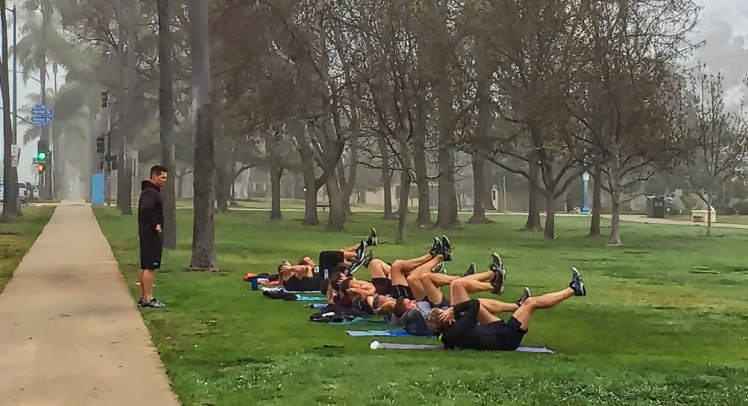
Assess recruits into the army; the army must be able to make distinctions between different types of men. While soccer players are in the military, those on their feet for most of their day are excluded from this requirement.
- The army requires that their soldiers are serious about their military service. With the weight restrictions and height requirements, the army can know how serious a person will be about serving in the military.
- This limits those who join for social reasons. For example, too small men may not participate because they will be unable to perform specific duties in combat or in hazardous jobs such as lifting heavy vehicles or supplies.
- Social mobility may also be limited. For example, a person who wants to distance himself from those he believes are below his social status may not be able to join because of his height or weight even though he is fit to do the job.
- The army also looks for cost-effectiveness in its recruitment process. They would not want to overspend on unqualified individuals for active service because such people can be dismissed from the army.
- This makes their standards more stringent than the health department. The army does not have to use this standard to provide for the health of those already in active service.
Hence, the army uses this standard to produce a more effective and efficient force.
How do height and weight relate to other measurements?
Height is known as one of the primary indicators for comparing various groups of people. It is also strongly correlated with individuals’ income, education level, social class, and occupation grade in different countries.
The military uses height to determine if men can perform specific tasks or not. The army also looks at weight to see if a brigade needs to be reinforced with certain people. For example, the military can help look for suitable people to fill in those positions that would require the least amount of resources.
How do the figures compare with civilian standards?
The recruits in the army are selected from a larger population. Thus, their measurements are not as different from those in the civilian population as those of Olympians.
There is a difference between height and weight in the civilian population. It averages about 1″ for heights of 5 feet 9 inches and higher and about 2″ at the lower end of this height range. The weight variation is much more significant in the civilian population than in civilians who have joined the army. It could be because of social factors influencing height and weight. Men tend to have a larger size than women in the civilian population.
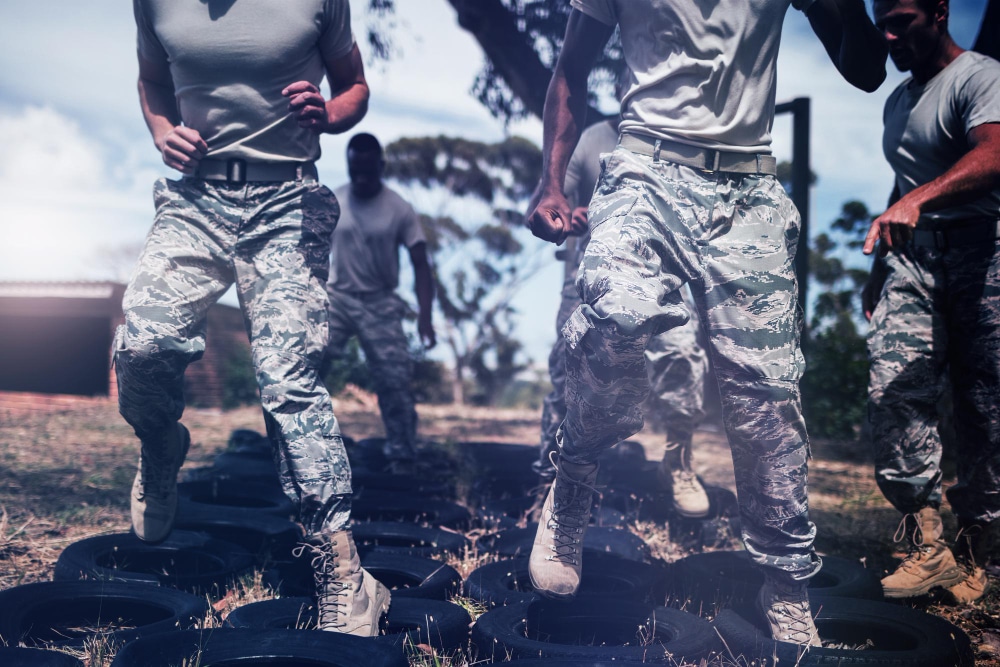
Implications of these averages for the military
Supportive evidence
Like individuals practicing sports, the body composition of non-military people would not affect the height and weight standards. Some athletes would be benefited from being fit. It showed that the army was not looking at this aspect as a way to discriminate against individuals from others.
Non-objective standard
The army does not use laws to determine the body mass, height, and weight limits for joining the military. The government makes up these laws. The government does not choose by deciding if it is morally acceptable for individuals to determine if they want to join the army.
It is less discriminatory
The army was using different height and weight standards compared to the health department. The army’s limits were set at a lower level than the health department’s limits. The military did not discriminate between body mass, height, and weight. On the other hand, the health department used objective measures to determine if people were physically fit enough to join the army.
It allows for change during a war
The army can change these standards during a specific time of war and reassessment all their soldiers during that period. The military does not use a constant bar with no flexibility compared to the previous one.
It means that the army would not be stuck with certain restrictions because of specific values for a certain period. For example, some people may want to join the military during a war, especially those preparing for national service but are too small to pass the height and weight requirements.
The army makes this possible by allowing people to be disqualified from joining the military if they do not meet these requirements during that time. It can be done through reassessment when they are ready to serve in the military.
The army also uses these evaluations to see if the entire force has been able to adjust to new standards.
It limits discrimination against minority groups
The army discriminates between various types of people based on height and weight, not color and race. The military imposes these standards even in countries where racial discrimination against some people. What the army does is allow for segregation but at a level that does not allow it to affect the military group as a whole negatively.
Increased military size
The army uses these height and weight standards to limit the number of people joining the military. It makes it possible for the military to create a large enough force because some people are not qualified due to their body composition.
It also gives fewer people an excuse to be exempt from mandatory service in the military because they are not qualified. It would also allow for an increase in the number of soldiers available during an emergency or wartime.
Reduces the expenses from being in the army
The military spends a lot of money on their soldiers because they need to pay them. Further, there are specific requirements for the army to meet. They need a place for housing, catering, and training the soldiers. The military can reduce their expenses due to this height and weight requirement because they can eliminate those who are not fit for service from joining the army.
These individuals are not likely to make it through training or during an emergency on the battlefield. The army will not spend on them because they will not serve in the military.
Therefore, the army would be able to save money by reducing the number of people they are funding, which will not be helpful.
The military would also have a small group of people they need to pay for and use resources. It is essential if the military works on a limited budget during an emergency like a war.
Helps to produce a more effective force
The army uses this height and weight requirement to ensure they are getting the best people who can perform specific tasks in the military. It is an essential part of training the soldiers, helping them become influential because they can use these standards as a benchmark for their training and combat readiness performance.
The army is not only making it possible for people of certain heights and weights to be a part of the military but can also reduce their costs by not funding these people. It makes them more effective as a group because they will not waste resources on useless individuals who only come in during specific emergencies. The soldiers would be efficient when they have fewer people in the group, especially if the size of the force is small.
It would be the case in a war or during the training of soldiers. They would need to focus only on preparing their soldiers for combat, nothing else. It is why they would not waste money on people who are just not fit for duty or who will be useless during actual action, especially in wartime.
The army will also have an effective force because they have reduced the number of people to fund and save on. It means they can pay for the soldiers who are needed. They do not have to spend on people who will not be helpful during wartime.
It does not discriminate against the physical needs of some people
The army does not discriminate based on health issues, illness, hypertension, and other medical conditions that may affect the body mass and height requirements. They do not make a selection based on health or medical care rather than on training and combat readiness performance.
They do not consider a person unfit for duty just because they need medical care. It means that all people are evaluated based on their training and combat readiness performance rather than their physical health and ability to carry out specific tasks.
It allows for an influential group with different body types
The army can have various body types in the military force. It is because the soldiers are part of a more significant force. These people are not considered unfit just because they do not meet the height and weight requirements.
These people might be able to serve in certain combat situations that require other physical abilities like jumping, sprinting, and carrying equipment. They could also stand out if the position requires high levels of endurance.
The army does not need all its soldiers to be fit in all situations.
Final Note
The army forces all people to join the army based on these height and weight requirements. They do this to allow a small number of people in the military an efficient force that can be used during wartime. This way, they would not need to spend money on many people. They will be able to have an effective military force because they would have fewer people in the army needing training and support.
It would enable the military to focus their resources on the soldiers who would be helpful in an actual combat situation. These soldiers will be able to support one another and perform well as a small group rather than a weak large force.


